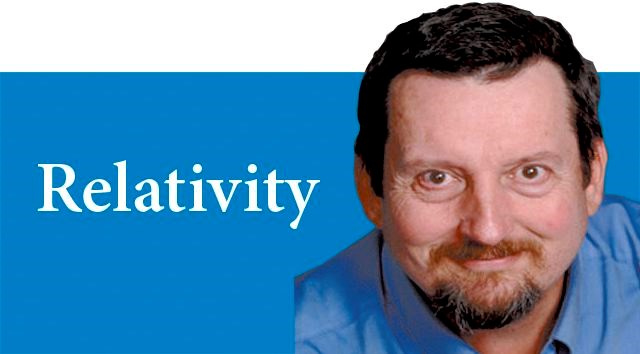MRI or magnetic resonance imaging is now a fairly common medical technique. It can be used for any number of issues but it is the one of the best methods doctors have for examining soft tissue within joints, muscles, or the brain.
The science behind these instruments owes a lot to early physics and the development of quantum mechanics.
In the early 1900s, physicists were exploring the structure of the atom using a variety of techniques. At the time, the most popular atomic model was called the plum pudding, although we would likely call it the Chips Ahoy model now. The model consisted of a blending of positive (cookie) and negative (chocolate chips) particles into a solid atom.
In a 1909 paper, Ernest Marsden, Hans Geiger, and Ernest Rutherford were able to show the mass of an atom is actually in a tiny nucleus with an overall positive charge. They surmised the electrons orbited this nucleus much like the planets orbit the sun in a solar system atomic model.
The time was truly one of excitement for scientists as new fundamental phenomena were described monthly. With the new model for the atom came many questions. Why were the electrons able to stay in their orbits? What do atoms really look like?
Over the next two decades, physicists were able to build a better picture of the subatomic world, which resulted in the development of Schrodinger's orbitals and Heisenberg's uncertainty principle. The world of quantum mechanics is a very strange place where electrons exist in probability clouds arranged around a nuclear core.
One of the consequences of these developments in quantum physics was the need for instrumentation to measure and test the theories. This resulted in the development of electronics which came of age in the 1930s and '40s, driven, in part, by physics but also by the world wars. Devices such as radar, jet engines and nuclear bombs came into being.
Quantum theoretical calculations had necessitated protons, neutrons and electrons have a property which was labelled spin. While sub-atomic particles don't actually spin like a top, it is a useful analogy. One of the more obscure scientific instruments was built by Felix Bloch and Edward Purcell in 1930s and called a 'nuclear magnetic resonance spectrometer' or NMR. It was an instrument designed to measure nuclear spin and test the theoretical calculations.
The spin of protons and neutrons in an atom result in the nucleus acting like a tiny bar magnets. This is not the source of magnetism in iron or steel, which results from electrons, but these nuclear magnetic properties are important and their effects are measurable. In the presence of an external field, a nucleus will line up with its north pole pointing at the field's south and vice versa, much the same as a compass lines up with the Earth's magnetic field.
What an NMR does is position these nuclear particles in a magnetic field and then shines radio waves on them. When a nucleus is hit by a radio wave of just the right frequency, it will flip over. That is, it will turn so that the north pole is lined up with the applied north pole and the south with the south. Flipping like this results in some of the radio waves being absorbed and it was this absorption which was first measured.
This wouldn't be very interesting except the nuclei of different elements all flip at different frequencies. You can tell the difference between, for example, hydrogen and fluorine by the wavelength of radio waves required to cause the nuclei to flip.
Furthermore, different types of hydrogen will flip at different frequencies. A hydrogen contained in a water molecule will flip at a frequency different from one in an organic compound. For chemists, this was a major breakthrough as different compounds could be identified this way.
One other subtlety to the whole experiment is something called spin-spin relaxation. Once the nucleus flips, it is like an upside-down top and will recess back to its original position. The north pole will slowly migrate to the south pole of the external field and vice versa. The result generates something called a free induction decay signal which is measured by modern NMR spectrometers.
After NMR was invented, scientists began to wonder what would happen if you put living tissue inside an NMR. Could you detect the molecules and atoms within cells?
After many years of technological advance involving the use of superconducting magnets and three dimensional imaging software, examining cellular activity became possible. It was not long before this was adapted to imaging human body parts and so, from this fundamental interest in the physics of nuclear magnetic moments, we have magnetic resonance imaging or MRI machines.
From abstract physics to pure chemistry to practical medicine, scientific ideas change our lives.



